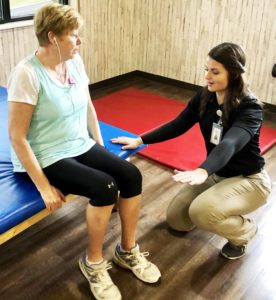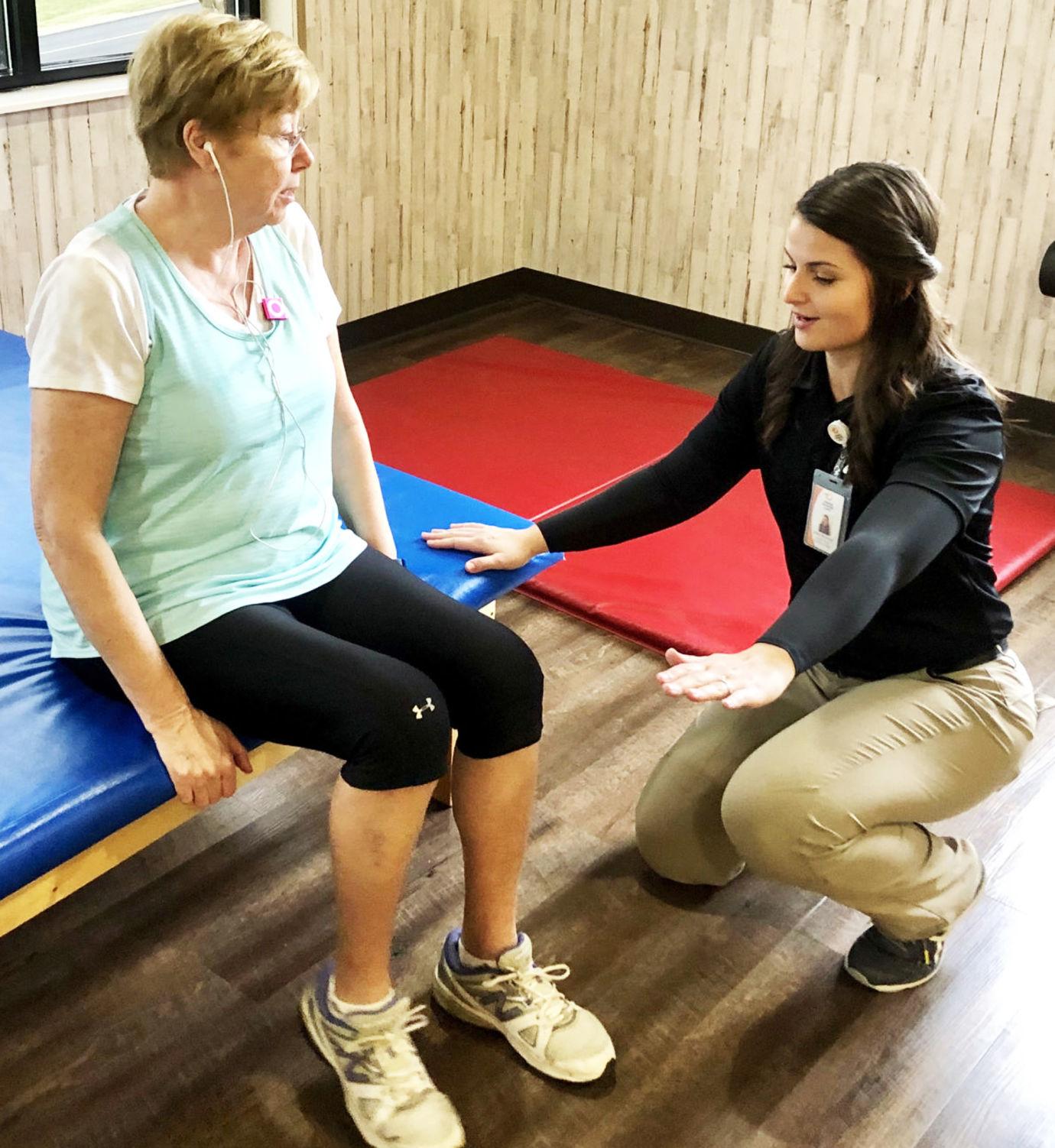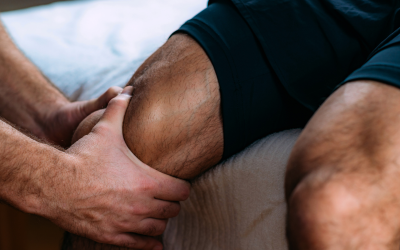
Mary Kay Bogardus, left, works with Tennessee Orthopaedic Alliance athletic trainer Gina McAlear at the Wellness Center.
Tellico Village residents dealing with body aches, sore muscles and other issues can now take advantage of exclusive assessments and exercises provided by Tennessee Orthopaedic Alliance.
Simon Bradbury, Tellico Village Property Owners Association recreation director, proposed the idea of offering full-time athletic training services to residents when he arrived in the Village three years ago.
The idea became reality last month with the official launch of the newly formed Tellico Timeless Foundation, which is covering the cost of the new service for the first year.
“Part of our strategic plan that we did for the department that we just completed this summer (is) calling out to have a professional in here to provide these type of services,” Bradbury said. “That type of service from a professional is going to cost about $50,000 a year to the POA, but we were creative and we worked with TOC to do this and get the program to where they’ll help fund it through their organization. Now with the foundation doing it, the POA’s not paying anything for it, but we’re providing this for all Villagers to come and do. It’s so phenomenal, I’ve used it myself. You don’t have to get a co-pay and the other part is employees can use this, too.”
TOC partnered with Tellico Village four years ago to provide simple training and rehabilitation services, but now the program is expanding to 20 hours a week with two certified athletic trainers.
“Probably 95 percent of the people that are handled by the athletic trainer are given corrective exercises, and a really good example of it is people with shoulder pain,” Bill Butera, Wellness Center floor trainer, said. “Say over the last four years, probably 50 people have been given simple exercises to strengthen their rotator cuff muscles. This has really been a great service for the people of Tellico Village over the years.
“It’s worked really well, and we’ve had 20-30 Villagers a month come in,” he added. “We’ll have somebody in here five days a week now from 7-11 a.m. available to Villagers. To our knowledge, this is the first time any active older adult community in the country has offered this to its residents.”
Jim Lilley, Village athletics director, has seen improvement with a nagging tennis elbow injury.
“I talked to her on Monday, first day she was here, and as you can see, there’s already other people that have taken advantage of it,” Lilley said. “I just think this is a big stepping stone for an adult community. To have your own trainer here five days a week, that’s a pretty good advantage for us.”
TOC athletic trainer Gina McAlear brings a plethora of experience and helped dozens of people in her first week on the job.
McAlear graduated from Eastern Michigan University and served as a full-time athletic trainer at Purdue University and the University of Tennessee.
“In that time, I was able to get a lot of experience really, really fast, which was great,” she said. “I loved working with athletes, I think that’s typically what you think when you see an athletic trainer — the people running onto the field, the people doing injury evaluations with the football teams and stuff. I think being here kind of proves that athletic trainers can work with all facets of life, not just a young college population or high school population. I think being here at Tellico, you’re seeing an older phase of life but they’re just as active, meaning they have a lot of similar issues as younger athletes do.”
The new program allows residents and recreational members to gain a better understanding of their physical issues and how to resolve them.
“I think me being here is just bringing a lot of accessibility, a lot of education,” McAlear said. “Anywhere from them asking me about certain stretches or certain exercises to, ‘My knee’s been bothering me for 10 years, can you help me find a doctor within TOC that can help me with that?’ I think it’s bringing a lot to the Wellness Center, a lot for the members and the employees of Tellico that they necessarily didn’t have before.”
Part of McAlear’s job is to provide injury assessments and beneficial exercises.
“Typically when someone comes to see me, it’s normally because they’re having some ache or pain, so I’ll start by talking to them about what they do in their daily life, what activities do they like to do, what activities are they not able to do because of their ache or pain, and then I’ll go through a functional assessment and injury analysis,” McAlear said. “That’s where I look at their body directly, I do some special testing that I’ve learned in school and in my experiences just so that I can narrow down, ‘Is something broken? Do we need an X-ray? Do we have a muscle imbalance? Do we just need to work on some stretches?’
“Based off my evaluation, that’s where we’ll decide, ‘Here’s kind of the course of treatment that we need to go’,” she added. “A lot of the things I see in this population are really not understanding the importance of stretching, not really knowing how to stretch properly, just needing some education basis. Some of these machines are better for one person than another person … looking functionally at them, giving them kind of a course of action of which machines will be better for them, which machines to avoid, things of that nature.”




